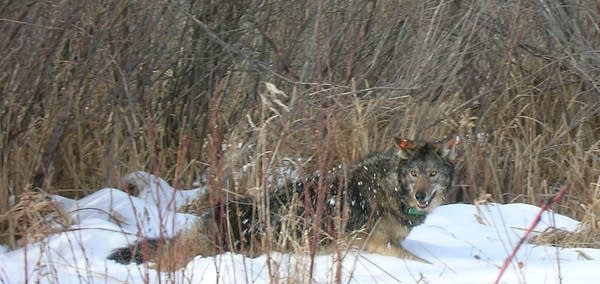Summit on resuming state control of wolves set in Wisconsin

Go Deeper.
Create an account or log in to save stories.
Like this?
Thanks for liking this story! We have added it to a list of your favorite stories.
Hundreds of people are expected at a summit this week in northwestern Wisconsin on whether the state should resume control of the growing gray wolf population.
Advocates who support a return of wolf hunting and trapping seasons will meet Thursday in Cumberland. Two Wisconsin Republican legislators organized the Great Lakes Wolf Summit, which is expected to draw up to 200 attendees and bring together people from Wisconsin, Minnesota and Michigan who want their states to again regulate gray wolves, the Milwaukee Journal Sentinel reported.
Great Lakes wolves went off the endangered species list in 2012. But in 2014, a federal judge put wolves in the western Great Lakes back on a list of federal endangered species.
Animal protection groups contend wolves must remain protected. But Wisconsin state Sen. Tom Tiffany of Hazelhurst, who organized the summit along with state Rep. Adam Jarchow of Balsam Lake, said wolves are "becoming increasingly more aggressive" and are moving farther south in Wisconsin.
Turn Up Your Support
MPR News helps you turn down the noise and build shared understanding. Turn up your support for this public resource and keep trusted journalism accessible to all.
"In many areas of the north, wolves have run out of groceries and they're moving south," Tiffany said.
Between 2012 and 2014, the Wisconsin Department of Natural Resources conducted hunting and trapping seasons for wolves. But starting in 2015 after the judge's ruling, Wisconsin, Minnesota and Michigan lost controls.
As a result, the DNR estimated that Wisconsin's minimum wolf population stood at 866 to 897 during the winter of 2015 to 2016 — a 16 percent increase over the previous winter.
Last winter's count was the highest since the 1970s when wolves, once eradicated from the state, returned to northern Wisconsin from Minnesota.
As Wisconsin's wolf population rebounded, there have been a growing number of reports of wolves harassing and killing livestock, hunting dogs and pets, the DNR said.
So far this year, wolves have killed at least 30 hunting dogs in Wisconsin. That's a record, according to David MacFarland, the DNR's large carnivore specialist, who expects more dogs will be killed this fall.
Since the judge's decision, the Wisconsin agency has relied mainly on nonlethal tactics to control wolves, including lights and noise, and the use of guard dogs and electric fences. Last year, crews erected 19 miles of temporary electric fencing. A similar amount is in place this year.
"But more and more, we are moving to a permanent situation at these farms," MacFarland said.


